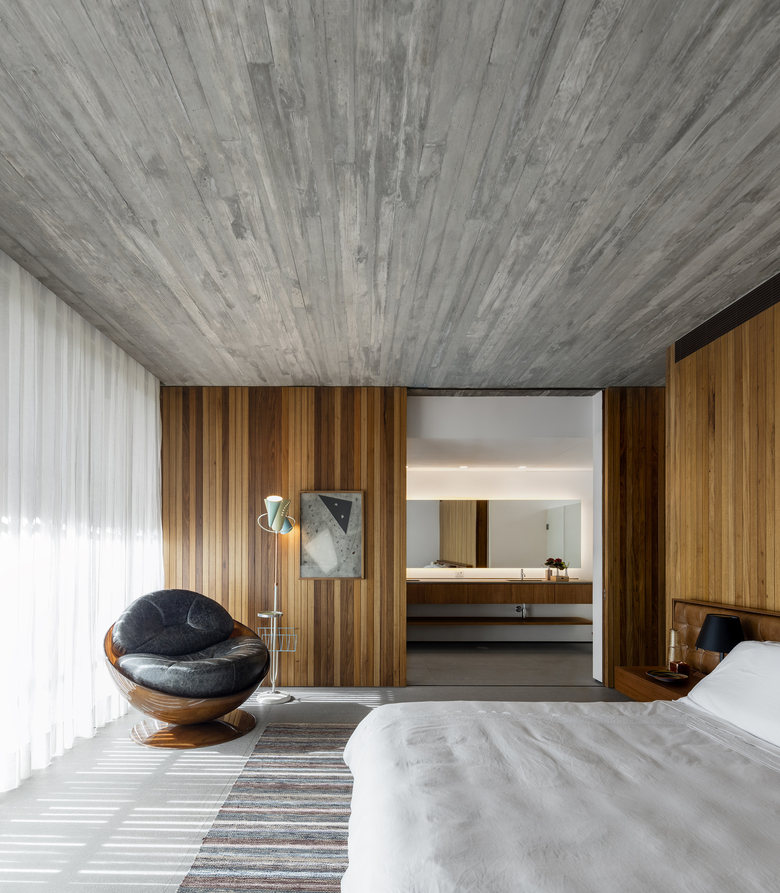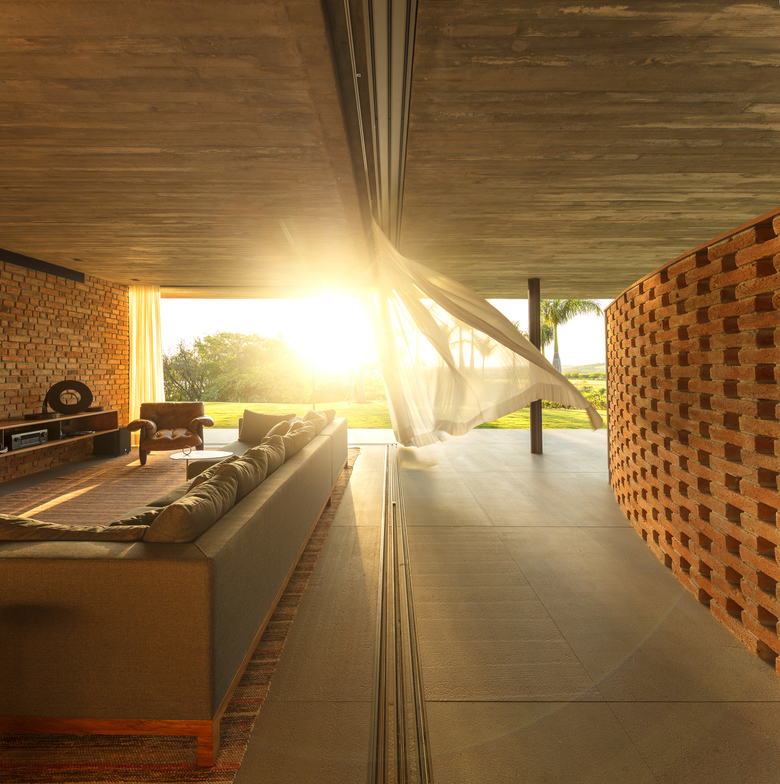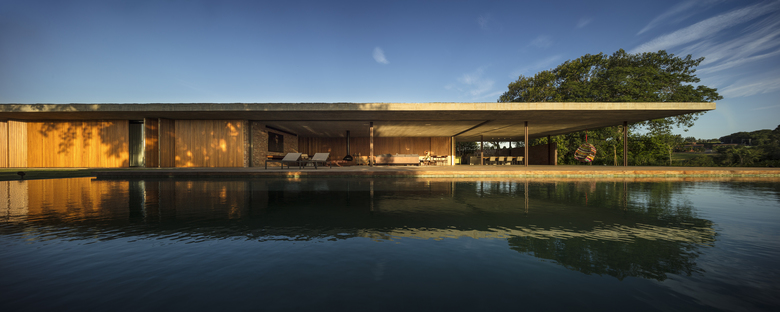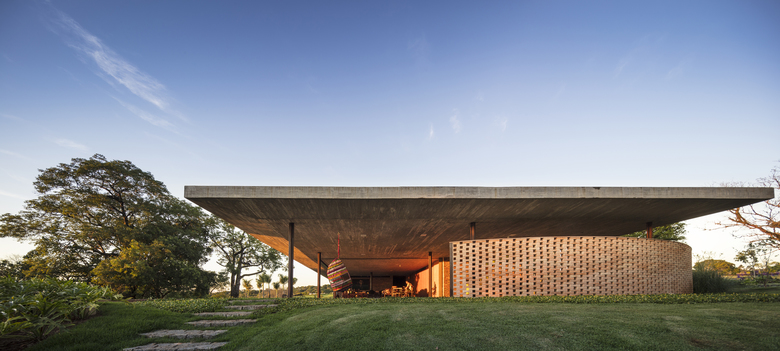Planar House
Porto Feliz
- Architectes
- Studio MK27
- Lieu
- Porto Feliz
- Année
- 2018
- Client
- Private
- Équipe
- Fernando Guerra (Photography), Lair Reis (Co-author), Diana Radomysler (Interiors), Marcio Kogan (Author), Maria João D'Orey (Landscape)
- Structure Engineer; Steel Structure; Foundations Project; MEP
- Afaconsult
- Foundations Consulting
- Apoio
- Sustainability Consultant
- CTE
- Air Conditioning
- Logitec
- Automation Consultant Project
- Noise
- Automation Consultant Installation
- Cynthron
- Contractor
- Fairbanks & Pilnik
Planar House is a radical exercise in horizontality, aspect commonly explored in the projects of the studio. Discreetly inserted in the highest point of the plot and favoring the existing topography, its presence is most strongly felt in the footprint rather than volumetrically. An extensive line in an open landscape.
This type of insertion on the plot demanded care and attention with the design of the rooftop, which is the fifth facade of the building. This was an exercise in composition and selection of equipment to be placed there, such as solar panels and skylights. The green roof mimics the surrounding lawn as well as contributes to the thermal comfort in the house.
Structurally, the slab is a rigid platform that is not supported by beams but directly by the pillars, which are distributed modularly in three axes. The cross-shaped metallic pillars are homage to the elegant proportions of miesian architecture.
Under the roof there are two programmatic boxes, the first one with the service areas, gym, tv and playrooms and the second one with the five en-suite bedrooms. The living rooms are located at the extremities and can be completely opened or closed by sliding glass doors transforming the entire house into a terrace. The interiors are made of low and solid wood furniture and the layout of the spaces leaves enough space for free circulation between the furniture and the panels and allows for an individualized reading of each piece. A translucent multi-colored club-chair hanging from the slab becomes the focus of attention and contrasts with the horizontality of the house.
Surrounding the rigid formal distribution, there is a vertical winding wall made of solid bricks arranged in solids and voids. Paradoxically, it defines the different relationships between the internal and external spaces. The wall, which is usually a symbol of division and isolation, in this project, is at times concave and at others convex, embracing the entrance garden and creating transparencies as well as offering protection from the street. Its brick texture contributes to a cozy atmosphere and creates light filters with kinetic effects as the day passes.
Projets liés
Magazine
-
Building Bridges with Chris Luebkeman
Aujourd'hui
-
Winners of 2024 EU Mies Awards Announced
1 day ago
-
WENG’s Factory / Co-Working Space
4 days ago
-
Reusing the Olympic Roof
1 week ago






























